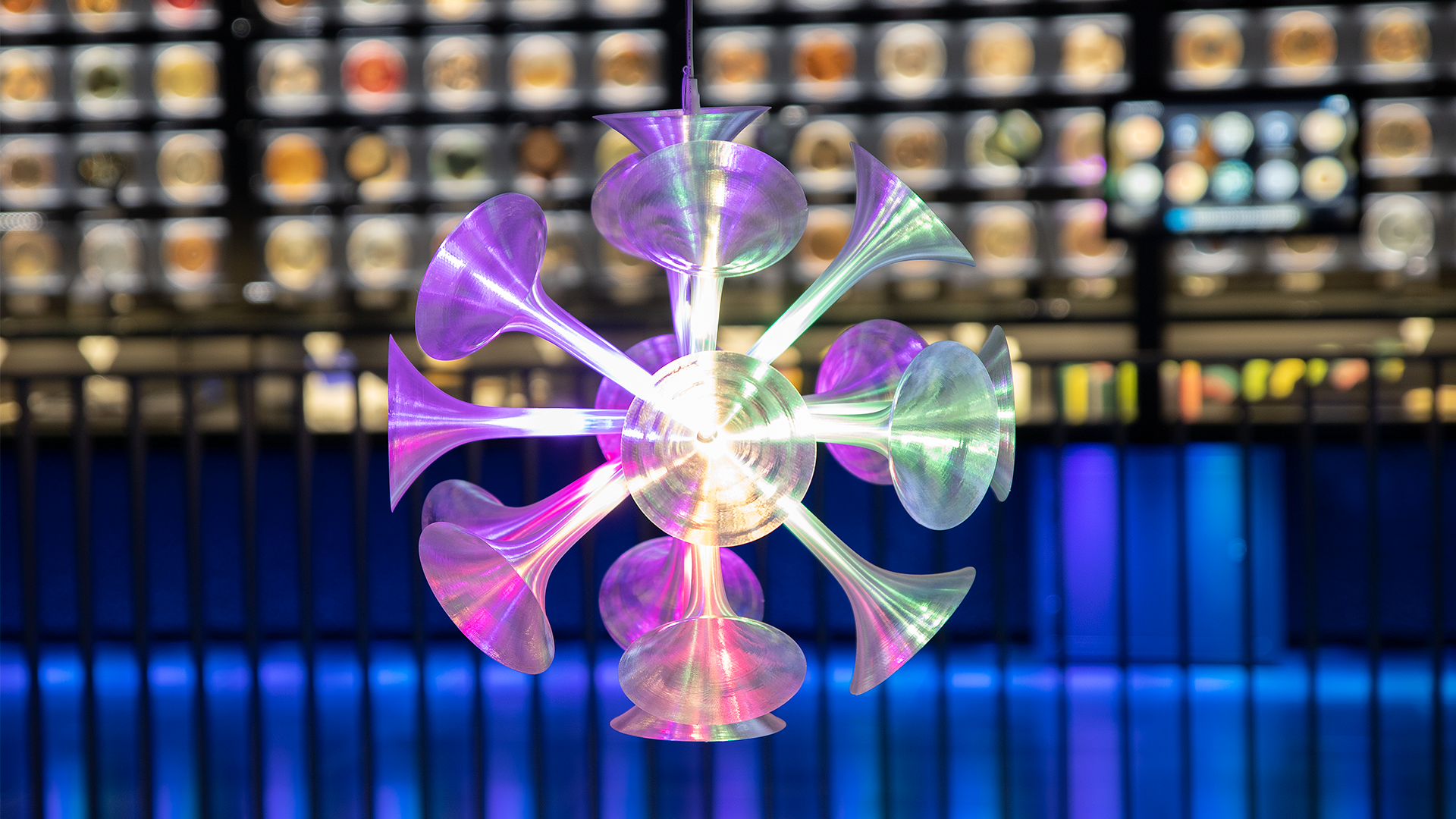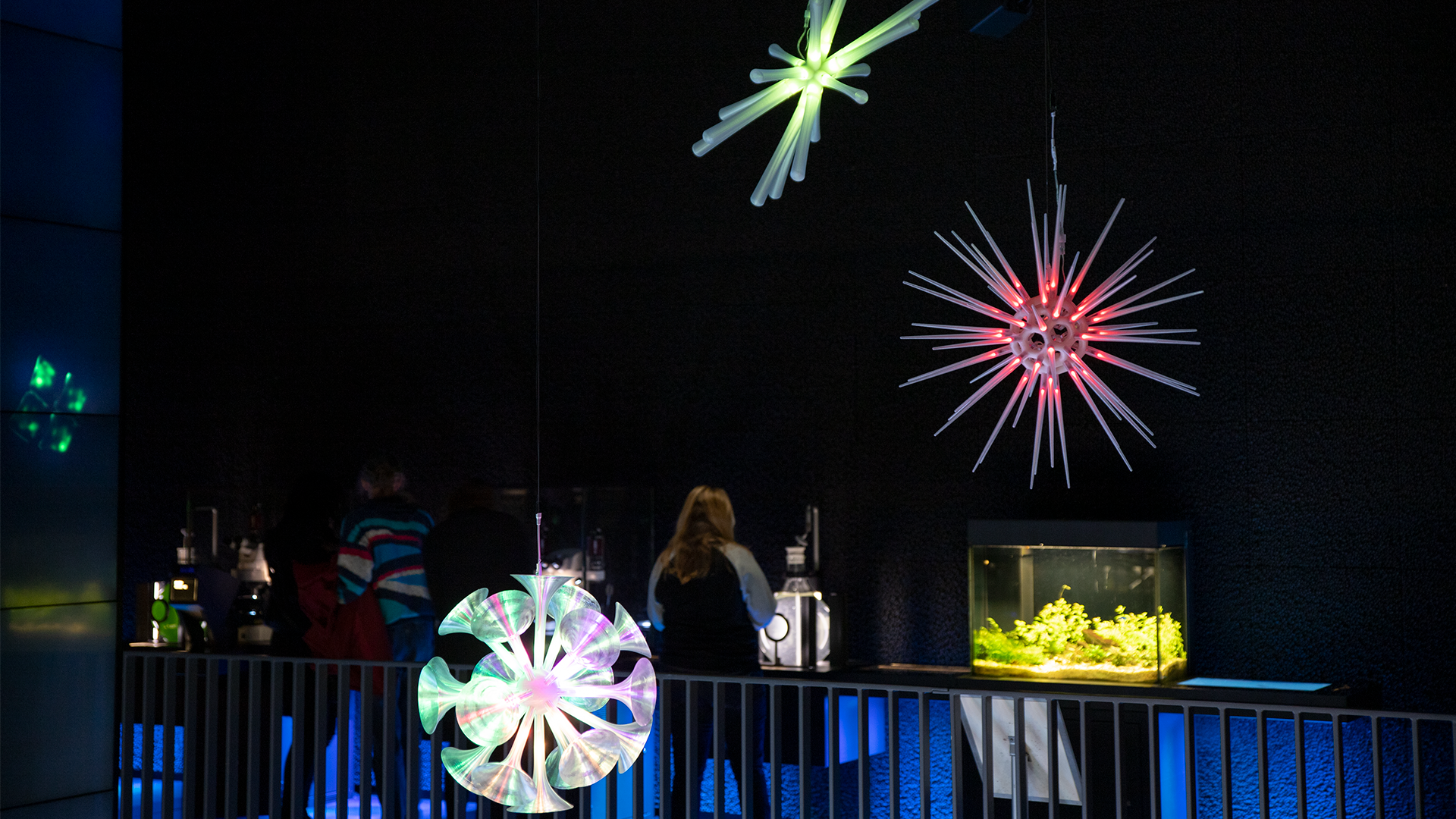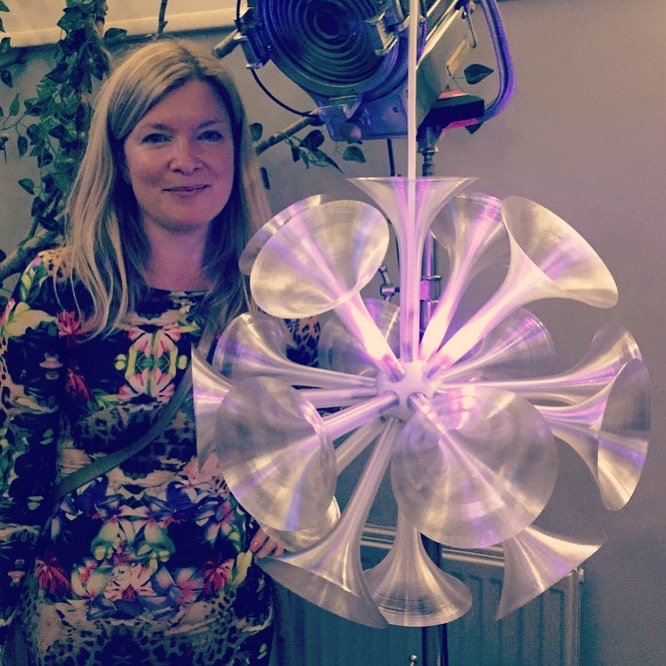During Amsterdam Light Festival visitors of Micropia could discover why certain mushrooms emit light, what bioluminescent bacteria do, and what micro-algae look like on a large scale. The exhibit on micro-algae consisted of three giant sculptures of species that belong to the phytoplankton. The sculptures were created by the British artist Iona Scott. Micropia interviewed her about the making of her sculptures.
Small life, big impact
Ever since she personally discovered how important plankton are, she never stopped sculpting about it. Scott: “It has been already more than 20 years ago, but the images of the beautiful but invisible plankton have stuck with me until today. I think communicating about it visually, through sculptures, is very important to gain more awareness about plankton and the story behind it. One would think that if things get smaller, they get more simple, but these micro-organisms with their geometric shapes get more complicated, and there are so many that we haven’t even recorded them all. Just because we can’t see them, doesn’t mean they are not there!”
Phytoplankton is a term for all green micro-organisms in water, such as green algae, cyanobacteria and diatoms. Like plants, they produce energy from sunlight and release oxygen. And how: it is estimated that phytoplankton produce more than fifty percent of the oxygen in our atmosphere.

Disco balls, spikes and arms
For her degree project Scott fashioned a sculpture from fibreglass and welded metal based on a species of Coccolithophore, another group of phytoplankton. The jolly named Discosphaera tubifera is a microbe that occurs in oceans with an exoskeleton (hardened outer side of the cell) made of calcium carbonate, better known as chalk. As the name of this species already suggests, this microbe looks like a disco ball built out of horns. No need to come up with any other name than it already carried: Discosphaera.
For the exhibit at Micropia she produced two more sculptures. Together with Jasper Buikx, head of Micropia, she decided to make one with spikes based on a Radiolarian, and one with 18 arms based on a Diatom. Microbes of these two groups of phytoplankton also have beautiful and complex cell shapes like the coccoliths, the only difference being that their exoskeleton is made of silica (silicon dioxide).

Party with microbes
Back in the day when Scott first made the Discosphaera sculpture at one-million times the creature's original size, it instantly became a hit. Due to the overwhelming positive reaction to its perhaps musically reminiscent shape, Scott hired it out to clubs and displayed it at raves in and around London. In order to reach an even wider audience she thought of making the design into a light, and as such the design has been patented.
It still took consistent effort to spread the word about the importance of phytoplankton and only today the deeper meaning and significance of these creatures is being recognised. “So my sculptures about plankton carry another message as well: don’t give up! If you believe in yourself and your work, and you feel that it is about something important, don’t give up! I still display my work at a wide variety of venues and I am still heavily involved in the music scene which was one of the earliest supporters of my work. I love a fusion of music and art. Great things happen if different forms of creativity come together.” After the fibreglass sculpture she also made one from paper for display in the United States. For a long time however she wanted to make a translucent one from ecologically-friendly materials. For the exhibit at Micropia she made 3D printed sculptures from recycled plastic.
Scott has noticed that her work is much more relevant today than it was when she started. Who knows where the sculptures might end up after being at the Amsterdam Light Festival. When visitors return home again after seeing Discosphaera and the others at Micropia (or perhaps at their local rave), she hopes mostly that her work has inspired us by showing the small life that surrounds us in the sea. “I hope that in face of species loss, and in face of the human impact on the planet, we can stay positive, work together, and feel connected to nature.”
The sculptures are still visible in Micropia.

